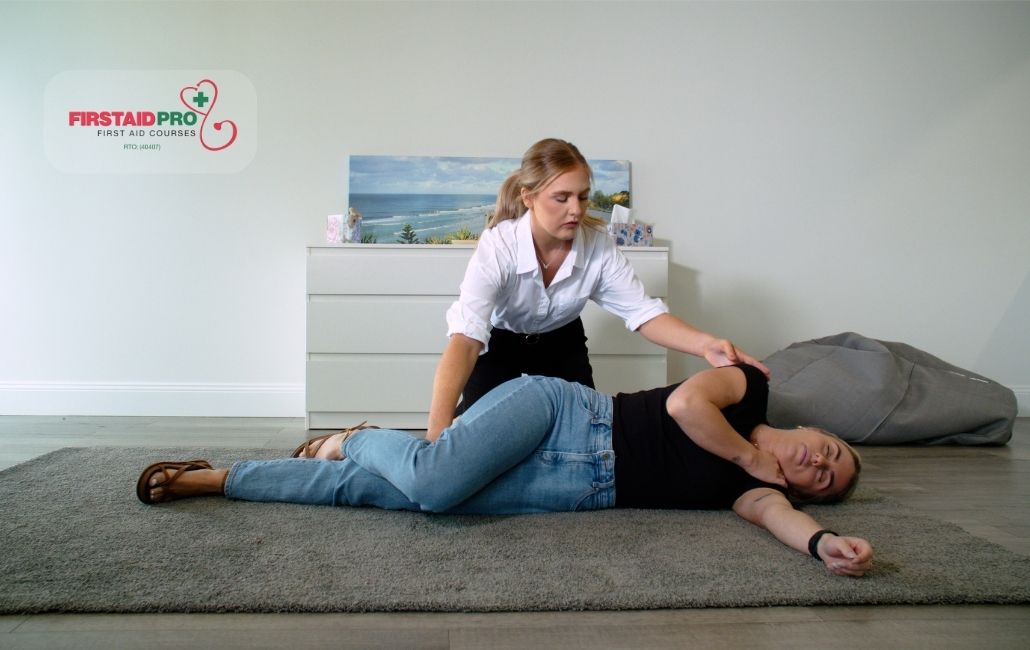Introduction
In the pressure of life, the kitchen area commonly becomes the heart of our homes. It's where we create scrumptious meals, share household minutes, and often, it's where crashes occur. Cooking area security is a crucial facet of keeping a healthy and balanced environment for ourselves and those we care about. Comprehending just how to take care of common injuries, especially blade cuts, can make a significant distinction in our well-being. This post digs deep right into cooking area security while focusing on efficient first aid for usual knife cuts and injuries.
Kitchen Safety: Effective Emergency Treatment for Common Blade Cuts and Injuries
Knife-related injuries are among one of the most common accidents in kitchens. Whether slicing veggies or sculpting meat, one slip can result in cuts that call for immediate interest. Recognizing how to deal with these injuries successfully not just minimizes discomfort but additionally avoids further complications.

Understanding Kitchen area Blade Cuts
What Are Common Types of Blade Cuts?
When we talk about knife cuts in the kitchen, a number of types enter your mind:
Superficial Cuts: These are minor surface cuts that typically do not hemorrhage much. Deep Cuts: These penetrate deeper skin layers and may call for stitches. Lacerations: Jagged cuts that can be quite severe. Puncture Wounds: Caused by sharp points that pass through deeper without broad tearing.Understanding these types aids in analyzing the intensity of an injury and choosing proper emergency treatment measures.
The Duty of First Aid in Kitchen Area Safety
Why Is First Help Important?
First aid serves as the frontline response in emergency situations. It plays a crucial function in community health by making certain immediate care is given before expert clinical assistance shows up. Recognizing standard first aid strategies can empower individuals to act rapidly and successfully throughout kitchen area mishaps.
Founding of St John Ambulance and Its Influence On First Aid Awareness
St John Ambulance has actually been crucial in promoting first aid understanding across neighborhoods worldwide. Established with an objective to educate people in lifesaving methods, their programs have actually significantly boosted public awareness concerning emergency treatment join CPR training in Darwin methods, specifically during emergency situations like kitchen area accidents.
Essential Household Items for First Aid in the Kitchen
To make sure prompt action during an injury, having vital home items easily offered is essential:
- Band-aids Sterile gauze pads Antiseptic wipes Adhesive tape Scissors Instant chilly packs
By maintaining these products arranged in a mobile kit, you can act promptly when required.
First Steps After Maintaining a Blade Cut
What Ought to You Do Quickly After a Cut?
Stay Calm: Panic can intensify the situation. Clean Your Hands: Laundry your hands thoroughly with soap before touching the wound. Apply Straight Pressure: Make use of a clean cloth or bandage to apply pressure to quit bleeding. Elevate the Cut Area: If possible, raise the injured component above heart level.These actions are essential emergency treatment steps that can mitigate injury severity.
Deep Cuts vs Superficial Cuts
How Can You Differentiate In Between Them?
- Superficial cuts will normally bleed gently; they may hurt yet will not be excessively painful. Deep cuts will certainly typically bleed more profusely and might expose underlying tissues or fat.
Recognizing these distinctions is vital for determining whether you need expert medical help or if you can manage it at home.
Treating Minor Injuries on Yourself
What Strategies Can Be Used?
For minor injuries such as superficial cuts:
Clean the injury with water and moderate soap. Apply disinfectant ointment. Cover it with a sterilized plaster to maintain dust out. Monitor for indicators of infection (redness, swelling).Understanding When to Seek Medical Help
How Do You Know It's Serious?
If you experience any one of the following symptoms after a knife cut:
- Persistent bleeding after 10 mins of using pressure Signs of infection (boosted inflammation or pus) A cut much deeper than half an inch
These indicators suggest it's time to look for specialist medical aid promptly.

Importance of Fire Extinguisher Operation in the Kitchen
Why Should You Be Prepared?
Fires can erupt all of a sudden while cooking-- recognizing how to operate a fire extinguisher is critical for cooking area safety:
Pull the pin. Aim at the base of the fire. Squeeze the manage gradually. Sweep side-to-side till extinguished.Being prepared can save lives!
Fall Avoidance Tips in The Kitchen
How Can Autumns Be Protected Against While Cooking?
Keep floors completely dry and clutter-free. Use non-slip mats near sinks or locations vulnerable to spills. Store regularly made use of items available to prevent straining or overreaching.By carrying out these strategies, you decrease risks associated with falls in busy kitchen area environments.
Recognising Animal Distress During Cooking Activities
What Ought to You Look For?
Pets usually roam freely around cooking areas while cooking-- this increases their risk for unintentional damage:

Understanding animal distress signals assists keep both animals and individuals risk-free during meal preparation times.
Gaining Permission in Different Areas Regarding First Aid Training
Why Is This Important?
Cultural level of sensitivities play an important duty when reviewing health and wellness topics like emergency treatment training within areas:
Understand regional customs before presenting first aid programs. Involve community leaders when preparing understanding campaigns.This technique fosters trust and encourages wider participation in essential training sessions.
Frequently Asked Inquiries (Frequently asked questions)
1) What need to I do if my knife cut starts bleeding heavily?
If your knife cut bleeds greatly:
- Apply direct stress making use of a clean cloth until it stops bleeding (around 10 minutes). Elevate the area over heart level if possible. If hemorrhaging continues yet point, look for clinical assistance immediately.
2) When must I see a doctor for my cut?
You should see a physician if:
- The cut is deep or broad, Bleeding does not stop after 10 mins, There are indications of infection like inflammation or swelling appearing later on on.
3) Can I use normal home products as replacement for first-aid supplies?
While some house items might give temporary relief (like tidy fabrics), it's best method to utilize sterile gauze and antiseptics particularly created for wounds to avoid infections effectively.
4) What is an optimal portable kit for kitchen area safety?
An optimal mobile set includes:
- Band-aids, Sterile gauze pads, Antiseptic wipes, Adhesive tape, Scissors, and instant cold packs-- everything needed for fast action throughout small injuries!
5) How do I understand if my kid needs stitches from a knife cut?
Parents ought to consult their doctor if:
- The cut is deep enough that you can not see its base, Blood proceeds moving despite employed stress, or there shows up muscle/tissue subjected with the wound.
6) Exactly how often must I update my first-aid supplies?
Regularly inspect your supplies every six months; change run out items right away! Keeping them stocked ensures readiness throughout emergency situations at any type of moment!
Conclusion
Kitchen safety is critical not just for protecting against accidents yet also for making certain appropriate monitoring when they take place-- particularly worrying knife-related injuries! By furnishing yourself with knowledge about common cuts along with efficient first-aid techniques tailored in the direction of them enhances community health and wellness efforts general! Remember: being prepared keeps everyone much safer while involving joyfully within our cherished kitchens!
Incorporating understandings from companies like St John Ambulance stresses this commitment towards enhancing awareness with practical education-- inevitably leading us in the direction of much healthier living settings concentrated on precaution actively released each day!
With knowledge comes power-- the capacity not just secure ourselves yet also those around us making cooking areas real places loaded with love rather than accidents!
First Aid Pro | First Aid Course Darwin (RTO 31124) is one of Australia’s leading providers of accredited First Aid and CPR training. We specialise in Basic Life Support, CPR & First Aid, Emergency Response, AED, and many other accredited courses. Our training is both convenient and comprehensive, combining online and face-to-face learning options to suit your needs. Keep your first aid certificates up to date with same-day certification upon completion. Plus, find a lower price, and we’ll instantly beat it by 10%! Conveniently located at Double Tree Hilton, Level 5/116 Esplanade, Darwin City, NT 800. Visit our website for course dates, directions and parking details.
First Aid Pro | First Aid Course Darwin (RTO 31124) is one of Australia’s leading providers of nationally accredited First Aid and CPR training. We deliver a wide range of courses, including Basic Life Support, CPR & First Aid, Emergency Response, AED training, and more. Our courses are designed to be flexible and comprehensive, offering both online and face-to-face learning options to suit your needs. You’ll receive same-day certification upon successful completion, and with our Price Beat Guarantee, if you find a lower price, we’ll beat it by 10%! Our Darwin training venue is conveniently located at DoubleTree by Hilton, Level 5, 116 Esplanade, Darwin City, NT 0800. Visit our website to check upcoming course dates, directions, and parking details, and book your spot today.